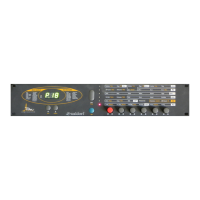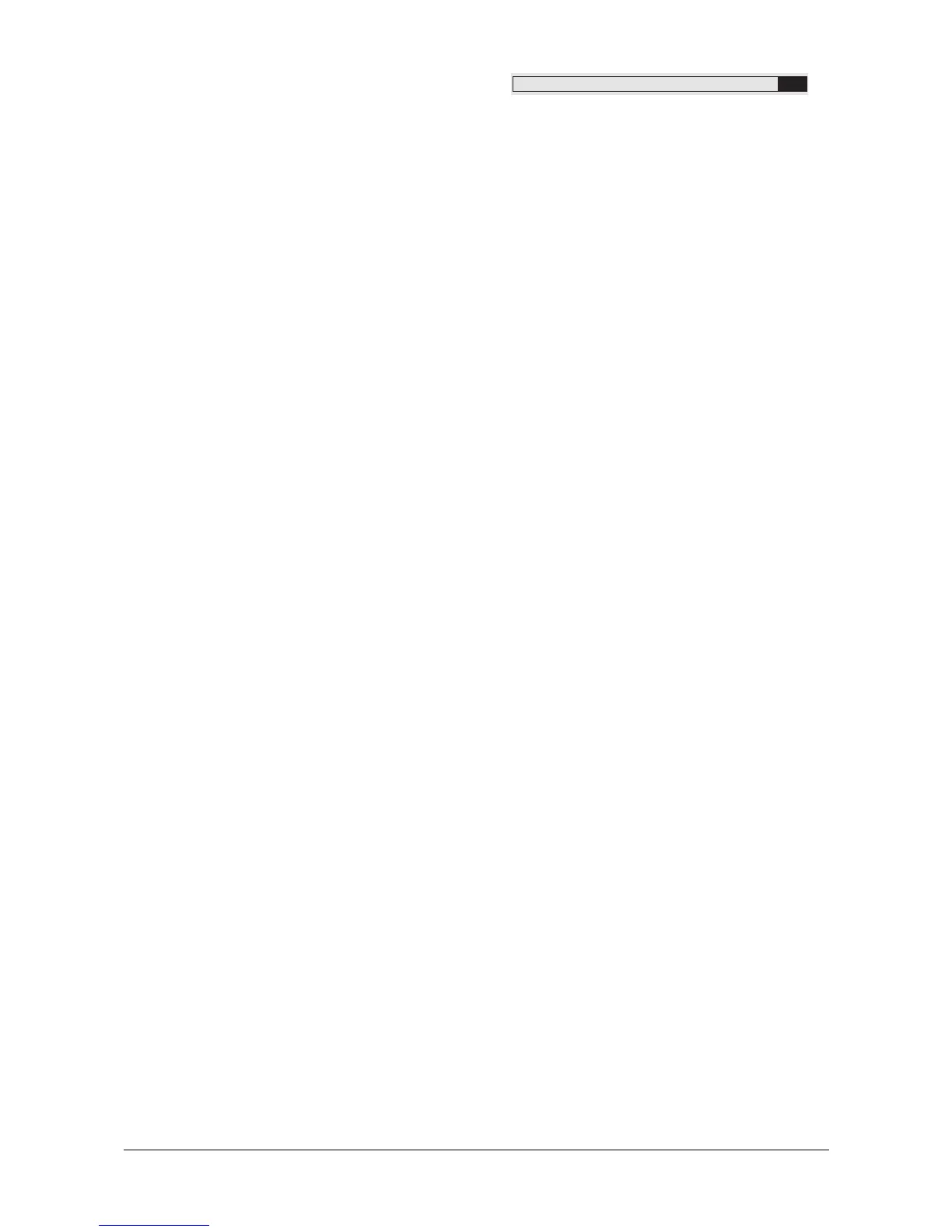36
User’s Manual Pulse • PulsePlus
8.7 Filter
Once the audio signal leaves the mixer, it is sent to a variable analog low-pass filter. This
filter is a component that has significant influence on the Waldorf Pulse's sound
characteristics.
A low-pass filter dampens frequencies that lie above a defined cutoff frequency.
Frequencies below this threshold are hardly affected. The frequency range below the
cutoff frequency is called the band-pass range, the frequencies above are called the
stop-band range. The Pulse's filter dampens stop-band frequencies by 24dB per
octave. This means that the volume of a frequency that lies an octave above the cutoff
frequency will be 24dB less than those frequencies of the signal that fall into the
band-pass range. To give you an idea of the extent of dampening, consider this: A
reduction of 24 dB reduces the original volume by approx. 94%. The dampening
factor two octaves above the cutoff frequencies reduces the original volume by more
than 99%, which in most cases means this portion of the signal is no longer audible.
The Pulse's low-pass filter also features a resonance parameter. Resonance in this
context means that a narrow frequency band around the cutoff frequency is
amplified. If this frequency is amplified to a great extent, then the filter will begin
self-oscillation, i.e. the filter oscillates audibly even when it does not receive an
incoming signal.
The parameters of the Pulse filter:
Cutoff 0...127 Determines the cutoff frequency. Tuning is scaled
roughly in semitone steps. At a value of 57 and a
Keytrack value of 32, the filter cutoff frequency is equal
to the pitch of a given MIDI note. If the tuning is not
scaled correctly, please refer to the chapter about the
filter tune function.
Keytrack -64...+63 Allows the filter cutoff frequency to be influenced by
the MIDI note number. Negative values reduce the
cutoff frequency, positive values increase it. A value of
+32 is a equivalent to a ratio of 1:1, i.e. the filter cutoff
frequency changes by an octave for every octave
interval you play. A value of +63 is equivalent to a
change of 200%, all other values change
proportionally, e.g. +16 equals 50%, -32 equals -100%
etc.
Env1 Sens -64...+63 Determines the amount of influence the modulation
source Envelope 1 has on the cutoff frequency.
Velo Sens -64...+63 Determines the amount of influence Envelope 1 has on
the filter cutoff frequency based on key velocity.
Cutoff Mod -64...+63 Determines the amount of modulation.
Source S.00...S.15 Selects the modulation source. Sources are assigned in
the same manner as in the matrix.
Resonance 0...127 Filter resonance parameter.

